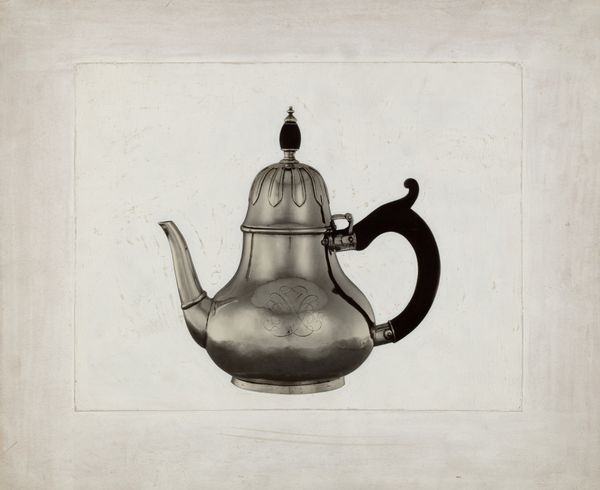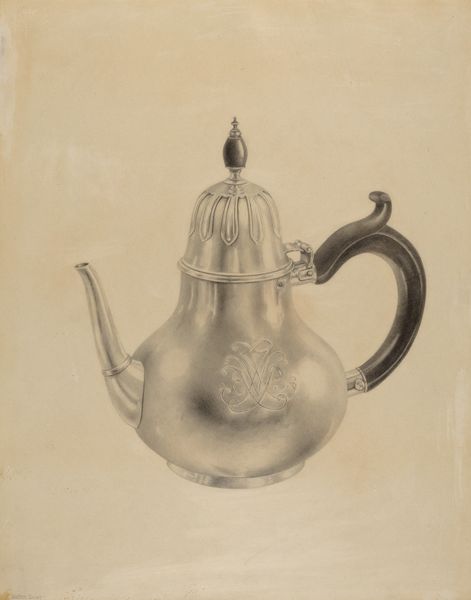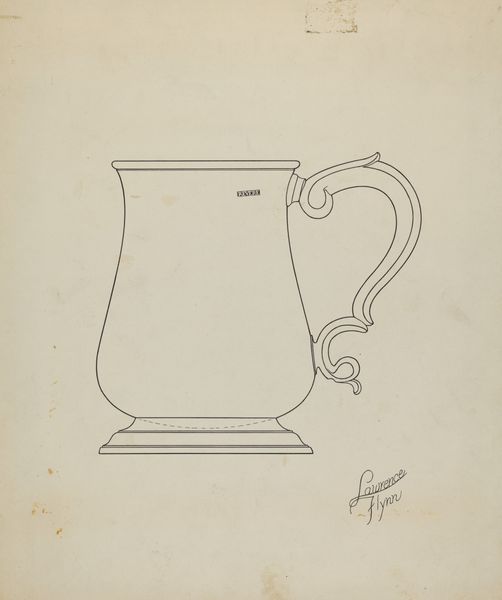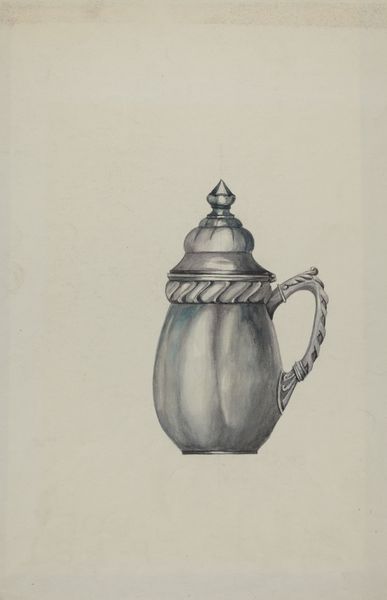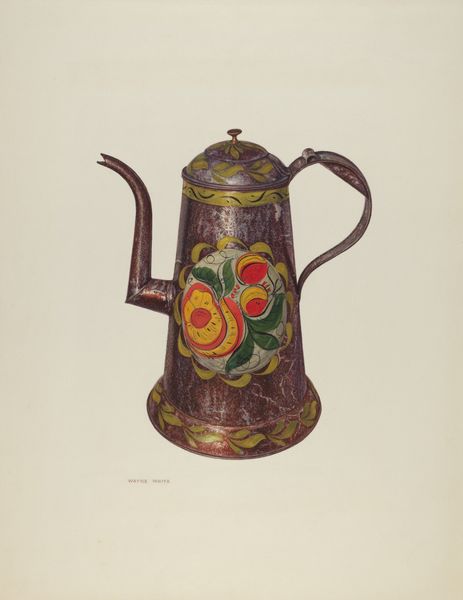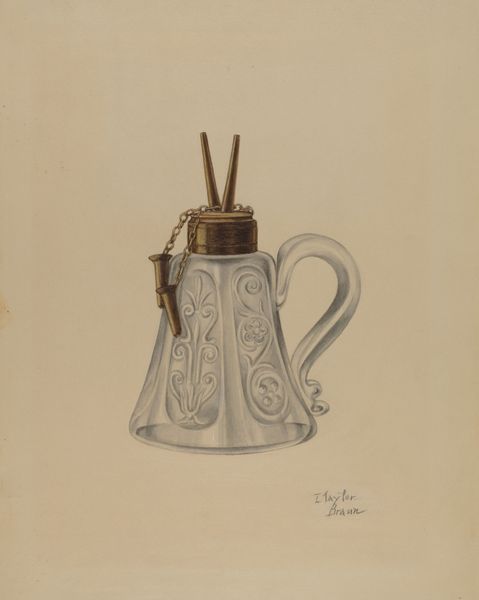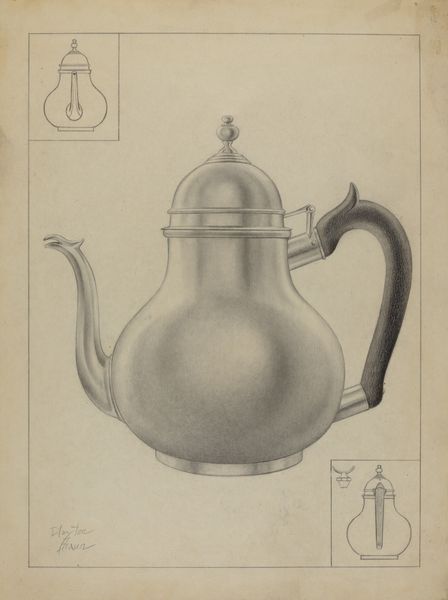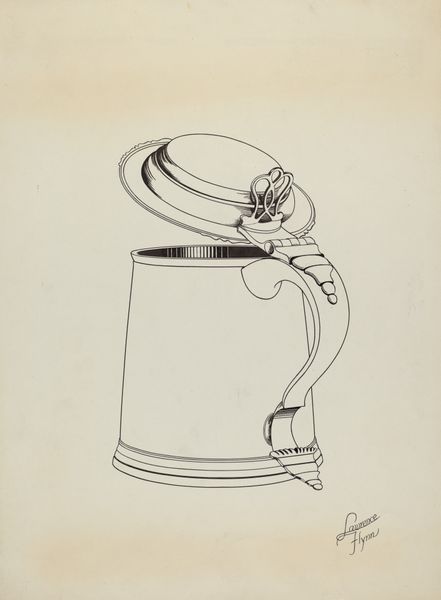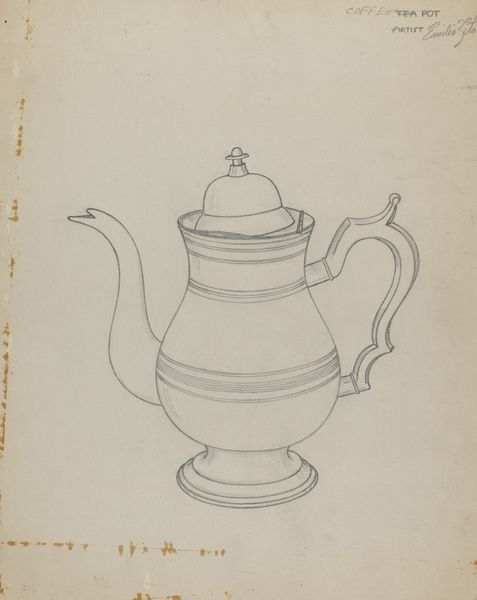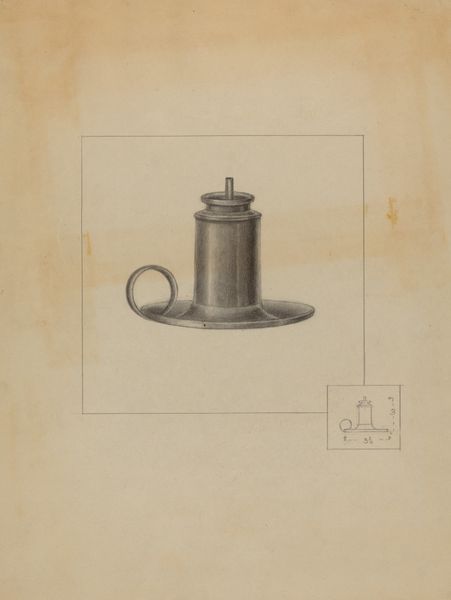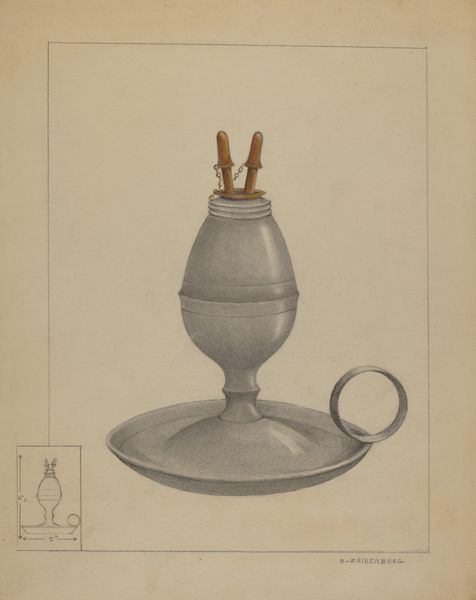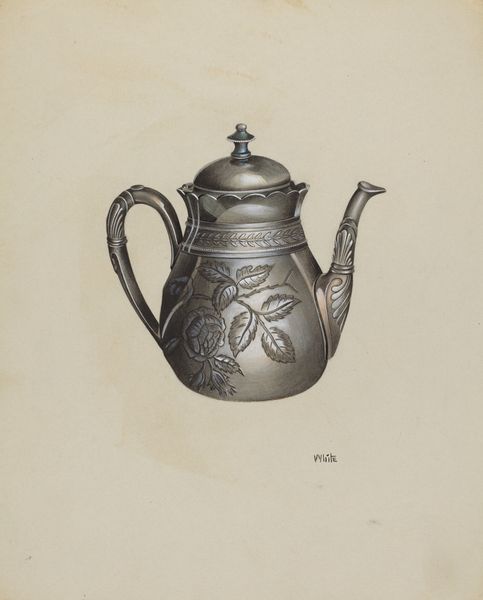
drawing, pen
#
drawing
#
geometric
#
pen
#
decorative-art
Dimensions: overall: 30.5 x 35.7 cm (12 x 14 1/16 in.) Original IAD Object: 8 1/4" high; 4 9/16" wide
Copyright: National Gallery of Art: CC0 1.0
Curator: Lawrence Flynn's pen and ink drawing, titled "Silver Teapot," drawn around 1938, is quite striking. Editor: Immediately, I’m struck by the precision. It feels almost… architectural? Coldly elegant, perhaps? Is this a design blueprint, more about the ‘idea’ of a teapot, rather than the feeling of tea, or function? Curator: I see what you mean about the blueprint feeling. It’s less about cozy afternoon tea and more about, say, streamlining domesticity. Given its geometric elements and that stylized monogram there, perhaps this teapot represents a desire for order and clarity amidst the rising turmoil in pre-war Europe? Editor: Precisely. The choice of subject - an item deeply ingrained with colonialism’s economic ambitions via trade - can be understood in relation to labour exploitation. Everyday objects and domestic spaces were (and still are) potent stages of production. What meaning can the designer and his contemporaries extract when it is placed as a spectacle in bourgeois households? Curator: Oh, that’s a fantastic way of reading it, actually. There’s something incredibly staged and self-conscious about the drawing, like Flynn is placing the teapot on a pedestal, highlighting it like it is the sole symbol of an opulent ritual. Do you feel that relates to a rising fear over resources among the wealthy class at the time, as a crisis was brewing in global economies? Editor: Perhaps. Or an assertion of status amidst those shifting landscapes. In any case, even without that explicit connection, the lack of context removes warmth; that geometric repetition speaks volumes. The rigid rendering really does strip any sense of warmth or usability. This isn't for the hands, the gesture of holding, pouring and consuming - and moreover sharing - a ritual in itself. This drawing transforms even something that most of us consider comforting into a specimen of material worth. Curator: I wonder, do you think Flynn was intending to subtly critique consumerism, or perhaps even endorse it? There is something intriguing about seeing decorative art through the lens of potential social commentary. Editor: It would be quite fascinating to uncover such layers. For now, seeing Flynn's rendering of a common domestic item serves to me as a stern symbol, almost devoid of practical use, highlighting the latent inequalities of design and social mobility at large.
Comments
No comments
Be the first to comment and join the conversation on the ultimate creative platform.
